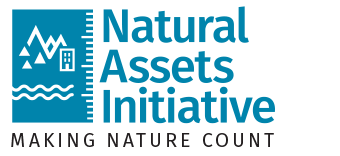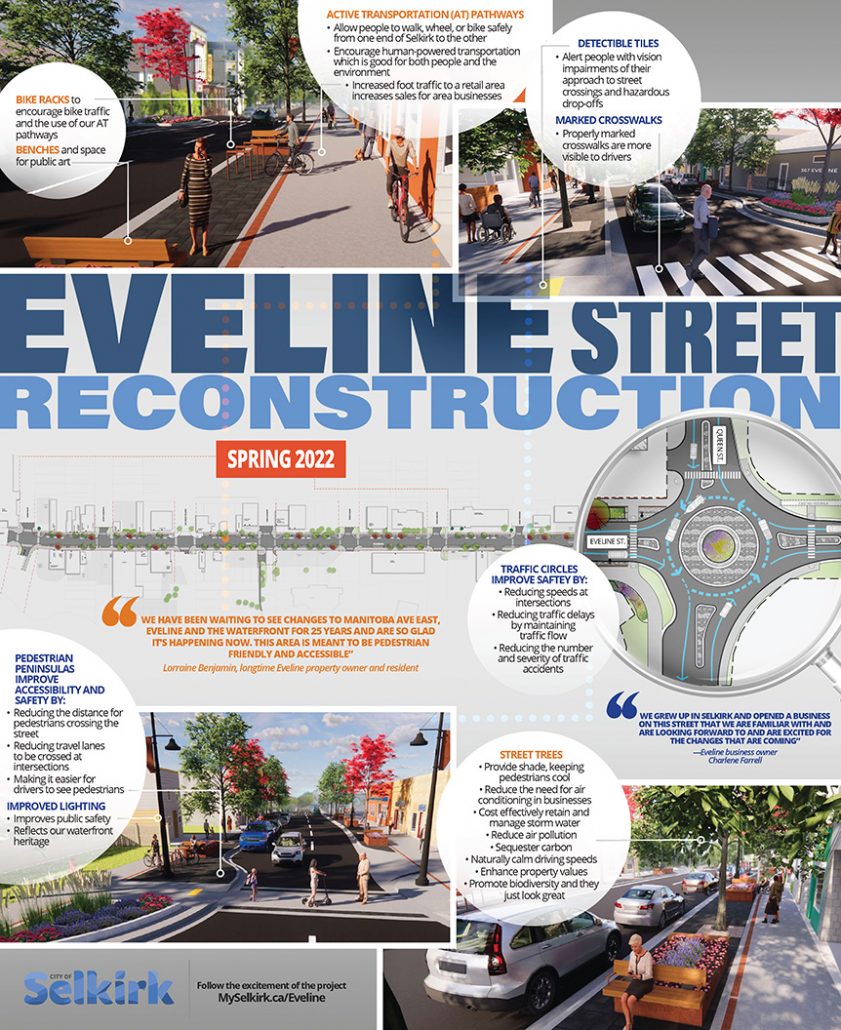‘Revolutionary Evolution’ Progressing Natural Asset Management in Selkirk, MB

Many local governments approach natural asset management step-by-step, often with an inventory or a single policy change first, testing the waters, and moving from there. The approach works well to get buy-in, generate early results, and create momentum.
But there are alternatives to slow growth — and Selkirk, Manitoba is seizing them. The City is changing the rules of the game to favour of natural assets and green infrastructure right across the board and in as few moves as possible. CAO Duane Nicol describes as the approach as “revolutionary evolution”.
Looking at Money Differently
Selkirk’s starting point appeared inauspicious.
The city of about 11,000 is located about 22 kms northeast of Winnipeg along the banks of the Red River. Selkirk had been shrinking steadily for 30 years — until recently. There had been little investment in infrastructure for years and, according to Nicol, “everything was broken and needed replacement.” In this stagnation, however, the seeds of change and regeneration were found, including with how almost every dollar gets spent.
“Council and staff decided that if we are spending the money anyway, let’s do it better”. So, for example, Eveline Street — one of the City’s most historic — required reconstruction aimed to bring back life to the core. As Nicol explains, “instead of spending $6 million, we spent $7.2 million, including grants we were able to get for trees. We ended up getting better drainage, more shade, better aesthetics and overall, a much better performing street.”
More fundamentally, however, “we started looking at every infrastructure dollar as a climate change dollar” says Nicol. “It is ridiculous to look at a climate change plan and say it will cost a massive amount of money. No one can afford climate action as a standalone item. It is not about additional dollars, but rather, using existing dollars better.”
Promoting the Eveline Street project. Provided by the City of Selkirk
Changing the Rules
The new approach to funding occurred in lockstep with sweeping policy changes that were very explicitly intended to change the rules of a game that historically results in infrastructure focussing primarily on engineered assets and nature being considered primarily for recreational or aesthetic purposes.
Specifically, the City changed their asset management strategy to explicitly include natural assets. Importantly, they also created an asset management bylaw that recognized the inherent value and service value of natural assets and stated both that, where practical, they will be managed in a manner similar to engineered assets, and that the City will substitute the use of engineered assets in situations where natural assets achieve comparable levels of service. These changes filtered into everything from job descriptions, training for bylaw officers, to Council report structures, worksheets for each project that indicate clearly whether the project increases or decreases greenhouse gases, street standards and road design guidelines, and a street tree policy that, among other things, connects the dots between trees, and streets that are protected from heat and UV, and end up lasting longer.
“Current thinking got us to this situation. We realized that we had to change the rules of the game” says Nicol. “If you try to succeed with natural asset management through one-off projects, you’re working against the machine, and you’re doomed to fail. We had to view a system as a system, determine how we make decisions, and change it all. You have to work upstream for real change.”
He adds, “Brute force also only works while someone is there to pound the table; after they’re gone, so is the driver for change. It’s really only system change that sustainably produces new outcomes. It’s about resetting business-as-usual to get the results you want rather than trying to manually intervene in every decision.”
Nicol observed that once the rules are adjusted, change becomes easier. For example, new hires are effectively buying in to a given approach to nature and natural assets simply by virtue of agreeing to work at Selkirk. New Councils, in their orientation, training, and briefings, only rarely change the fundamentals of how the organization is administered. They adopt business-as-usual processes and decision-making methods, which tend to promote the same outcomes as their predecessors.
Making it Happen
A few things had to fall into place to make all of this possible.
For starters, the City admittedly has a high degree of trust between staff and Council that is not necessarily the norm — Nicol himself grew up in Selkirk and is a former Councillor. Related to this, there always a certain amount of force required to overcome inertia and this was facilitated by the strong relationships with Council. “You simply have to be prepared to make big changes in the face of opposition. Council has to have some gumption and they must trust that administration is going to get it right.”
Communications has also been a central pillar, with the City employing what Nicol refers to as ‘just-in-time communications.’
“We meet people when and where they are interested and willing to engage. The time to do this is when you are doing things that interrupt the citizen’s normal routine, whether it is a new tree or reseeding a boulevard.” So, Selkirk was on-the-ground with people and signs to explain each and every change.
Proactive communication is key to building community support for natural infrastructure projects in Selkirk; the City will post signs like these in the areas when tree planting to inform citizens of the purpose of the work being carried out. Provided by the City of Selkirk
The results are everywhere — not just on Eveline Street, but in land that the City is no longer mowing but instead rewilding; boulevard with new tree plantings interspersed amongst aging trees; edible landscapes; and, plots of land to test what native species thrive best, along with intensive efforts on tree-planting as a key plank of an adaptation strategy and urban design.
Does it Matter?
Does Selkirk’s example matter? Nicol responds with an emphatic “yes”. “All of us can choose to do things differently. And all of us must make infrastructure investments in aging assets and that is an amazing starting point. And our example, I think, shows that working with nature is just a better and smarter way to get things done.”
Watch: Eveline Street Reconstruction – Sustainable Infrastructure with Erna Buffie
Author: Roy Brooke, Executive Director at NAI




